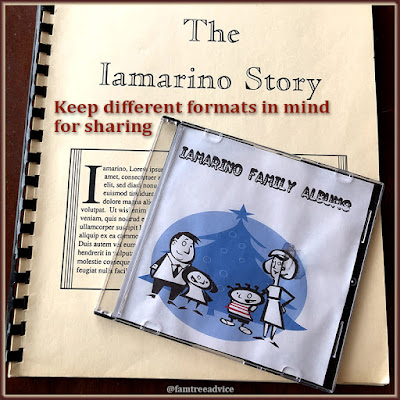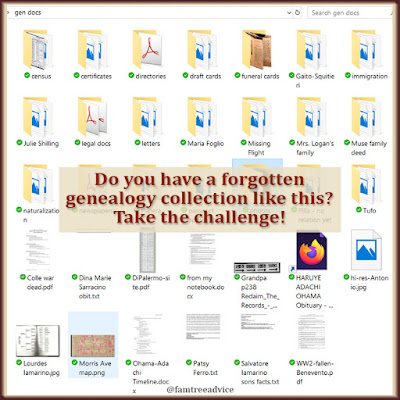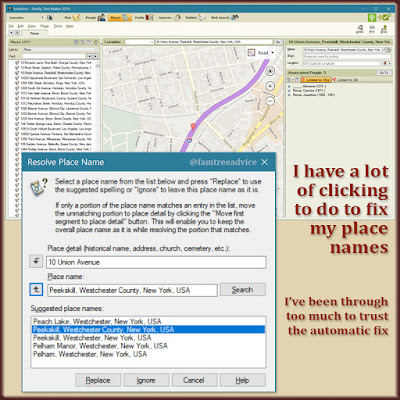Don't just tidy up your family tree. Get it ready for inspection.
I don't like a messy house. But I don't obsess over cleaning it unless company is coming. Then I spend hours cleaning floors, vacuuming crevices, and polishing every surface.
You know what? I've been treating my family tree the same way. It's in fine shape.
- I search for and fix errors with tools like Family Tree Analyzer.
- I stick to my multi-step process for making source citations.
- I back up all my files every Sunday.
- I use my document tracker spreadsheet to keep track of every single document in my family tree.
Sure, it's neat and tidy. But it isn't ready for a critical eye.
Since 2020 is a lost cause, I've abandoned the genealogy goals I set in January. This year calls for something different.
 |
| Your family tree will always have flaws. But you can make many parts of it shine. |
Finding a New Way to Scrub-up the Family Tree
I hit on a new idea this week. I heard from a man with roots in one of my ancestral hometowns. He's written to me many times with links to my relatives' records from the town. He inspired me earlier to spend time building out my Santa Paolina family.
Even after that, he sent me a new link to my 7th great aunt's death record. That made me realize how incomplete my tree is because, let's face it, we've all got thousands of ancestors.
I had this desire to finish up branches, or family units, or at least individuals. I was updating my document tracker with a new-found marriage record when it hit me.
Each line in my document tracker is an item to complete, to dust and polish, to make ready for inspection.
At that moment, I was adding an entry for the 1834 marriage of Antonia Viola. The majority of people in my family tree are Italians from the 1700s and 1800s. The most I can find for them is a birth, marriage, and death record. Since I had Antonia's birth and marriage records, I felt the need to complete her line in the spreadsheet. All I needed was her death record.
 |
| Coloring my "complete for now" lines shows my progress and highlights work to be done. |
I determined that she died outside the range of available death records. (In this case, she died after 1860.) I have a rule I follow when this happens. In the Need to Find column of my document tracker, I type:
- out of range: death,
- out of range: birth, or
- out of range: marriage.
That tells me precisely what to search for if they ever publish more documents online.
Since Antonia Viola's line was as complete as I can make it, but one document is out of range, I colored her line blue. If I had found her death record, I'd type "n/a" in the Need to Find column, and I'd color the line green. Complete and ready for inspection.
Completing her line made me so happy, I completed everyone named Viola in my document tracker.
This is where all my over-the-top efforts pay off. I have every available vital record from my ancestral hometowns on my computer. I'm working my way through the towns, renaming each document image to include the person's name. That makes the entire town searchable.
My Viola people are from Colle Sannita, and that town is 100% searchable on my computer. A program called Everything is fantastic at finding anything on my computer instantly.
I'm inspired to complete and color more and more lines in my document tracker. I'm inspired to rename more and more files from my other towns. I'm inspired to finish up that one family before my collaborator sends me another link to a great aunt!
You can't make your family tree 100% complete and ready for inspection. But you can pick one aspect of your work and make it as perfect and squeaky-clean as possible.
Which untidy aspect of your family tree is calling out to you today?




















